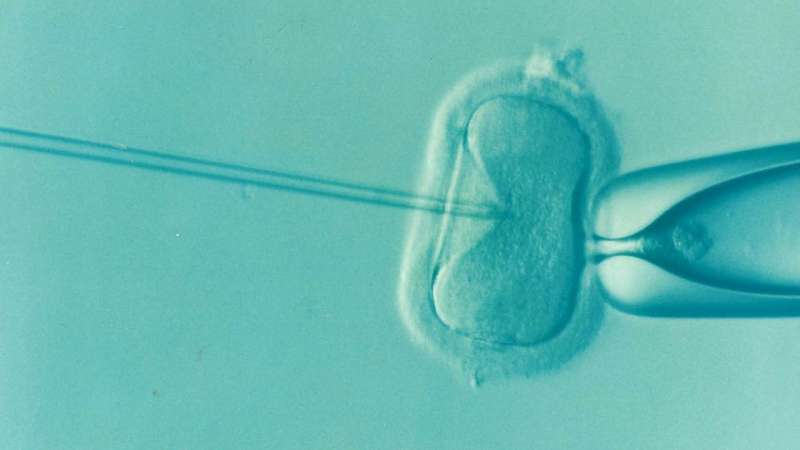Credit: CC0 Public Domain
The use of time-lapse monitoring in IVF does not result in more pregnancies or shorten the time it takes to get pregnant. This new method, which promises to "identify the most viable embryos," is more expensive than the classic approach. Research from Amsterdam UMC, published today in The Lancet, shows that time-lapse monitoring does not improve clinical results.
Patients undergoing an IVF treatment often have several usable embryos. The laboratory then makes a choice as to which embryo will be transferred into the uterus. Crucial to this decision is the cell division pattern in the first three to five days of embryo development. In order to observe this, embryos must be removed from the incubator daily to be checked under a microscope. In time-lapse incubators, however, built-in cameras record the development of each embryo. This way embryos no longer need to be removed from the stable environment of the incubator and a computer algorithm calculates which embryo has shown the most optimal growth pattern.
Costly method
More and more IVF centers, across the world, use time-lapse monitoring for the evaluation and selection of embryos. Prospective parents are often promised that time-lapse monitoring will increase their chance of becoming pregnant. Despite frequent use of this relatively expensive method, there are hardly any large clinical studies evaluating the added value of time-lapse monitoring for IVF treatments.
Largest study into time-lapse monitoring
This study evaluated the IVF results of 1731 patients in 15 Dutch fertility clinics in the period 2017-2021, which makes it the largest randomized controlled trial ever performed to assess the effect of time-lapse monitoring on the pregnancy rate. IVF treatments that made use of time-lapse monitoring were compared with classically executed treatments.
The effect of the stable culture conditions, thus without removing the embryos from the incubator, and the new selection method based on a computer algorithm were also examined separately. For the first time, the number of patients who became pregnant within one year was examined rather than only studying the results of the first embryo transfer.
No increase in pregnancy rate
Half of the patients gave birth during the study period. The application of time-lapse monitoring did not improve the pregnancy rate within one year. Moreover, patients did not become pregnant any sooner by using this method. Furthermore, after the first embryo transfer, the pregnancy rate did not differ between the three study groups. This study shows that both the stable culture conditions in a time-lapse incubator and the computerized embryo selection method do not improve the chances of success of an IVF treatment.
Extra costs
The cost-effectiveness of time-lapse monitoring is currently being analyzed. The purchase and maintenance of time-lapse equipment entail high costs for hospitals, society and, in many countries, also for patients. However, these additional expenses do not lead to more pregnancies.
"IVF centers across the world feel the pressure to offer the latest technology to their patients. New devices or techniques are regularly introduced without evidence from scientific studies which demonstrate that they indeed increase pregnancy chances. New doesn't necessarily mean better," says clinical embryologist Dorit Kieslinger.
More information: Clinical outcomes of uninterrupted embryo culture with or without time-lapse-based embryo selection versus interrupted standard culture (SelecTIMO): a three-armed, multicentre, double-blind, randomised controlled trial, The Lancet (2023).
Journal information: The Lancet
Provided by University of Amsterdam






















